Trying to find the best entry-level DSLR camera to start your photography journey? There are a lot of strong contenders out there, but our in-depth guide might help you find the right one for your needs. (Want a broader look at the best beginner cameras? Check out our separate buying guide on that, which covers all types of entry-level cameras, including mirrorless).
Photography can be an expensive endeavour. Whether you plan to pick it up as a hobby or advance to becoming a professional down the line, starting off can be a hefty investment. You'll need a 'proper' camera and at least one lens.
One of the ways to get started in photography without blowing out your budget is to consider getting a DSLR. With the photographic world moving towards mirrorless technology, DSLRs are getting cheaper (albeit older), as are their accompanying lenses.
And despite mirrorless systems coming leaps and bounds since they first arrived, DSLRs continue to offer some advantages over the newer technology, particularly in the areas of handling and battery life, even the entry-level DSLRs targeted at beginners. Plus, they remain the only format to feature true optical viewfinders.
Admittedly manufacturers have practically stopped making DSLRs – Sony has pretty much phased out its A-mount DSLRs, while Canon has discontinued its 7D line – but that doesn't mean the DSLR format is dead. Both Canon and Nikon continue to offer a wide range of entry-level DSLR models, with extensive lens catalogues to match.
And with fewer fresh models hitting the shelves, beginners will usually find the best value in slightly older options like the Canon EOS 80D and Nikon D5600. These might not offer cutting-edge technology, but they tick most of the important boxes for beginners, without breaking the bank. For this reason, we've included both current and older models in our guide below.
What's the best beginner DSLR you can buy right now? Our top pick is the Nikon D3500. This first launched back in 2018, but is still an outstanding entry-level option. It might lack the advanced features and superlative performance of more expensive rivals, but it also delivers a competent combination of stellar image quality, novice-friendly features and value.
That said, there might be a beginner DSLR that’s better suited to your specific needs and budget. If you're unlikely to be shooting video, for example, you might find that an older, stills-focused model like the Nikon D5300 or Canon EOS Rebel T7i / 800D might offer the best value. We’ve tested a whole range of the latest and greatest beginner DSLR cameras and the recommendations in this buying guide are intended to cover every budget, shooting style and requirement. Read to the end and you’re sure to find your ideal option.

The Best DSLRs for beginners in 2021:
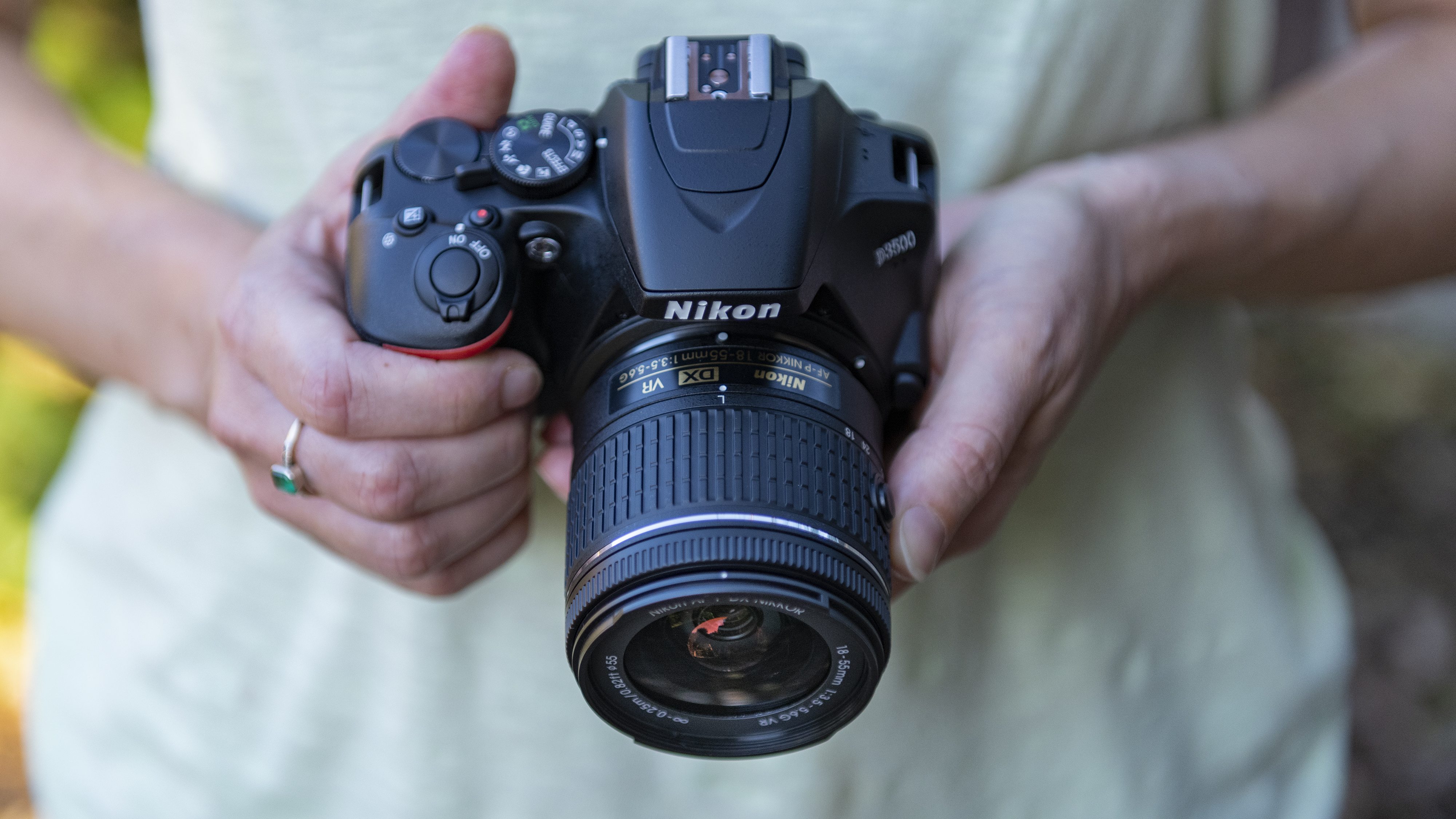
Nikon may not have announced any new entry-level DSLRs for a while, but the D3500 remains an excellent option for those new to photography. It picks up from where the D3400 left off, but with a handful of extra perks. Unlike power-hungry mirrorless models, the major advantage of this camera is battery life. You can keep going for 1,550 images between charges, which is way ahead of most other DSLRs, while the 24MP sensor delivers excellent image quality. Nikon has also revised the body and control layout, not only to make it nicer to handle but easier to use too, while the Guide Mode takes the first-time user's hand and walks them through all the key features in a way that makes everything easy to understand. We love it – and if you're just getting started, we reckon you will too.
- Read our in-depth Nikon D3500 review

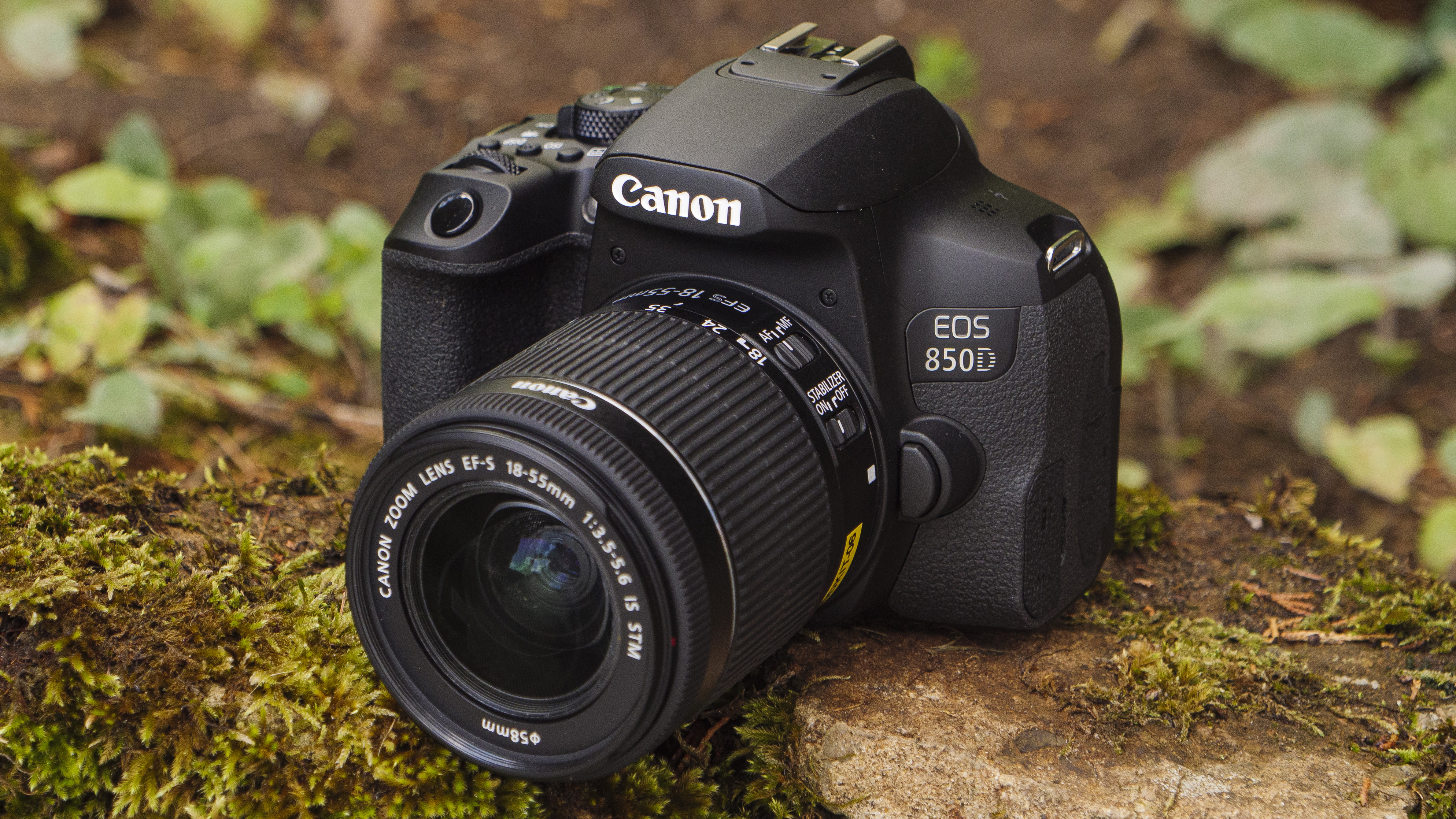
The Canon EOS Rebel T8i (know as the EOS 850D outside the US) has now officially taken the baton from its Rebel T7i / EOS 800D predecessor, with stock of the latter tricky to find. This new model isn't a huge upgrade, with the most notable addition being a 4K video mode that's somewhat hampered by frame-rate restrictions. Still, the Rebel T8i / EOS 850D remains one of our favorite all-round DSLRs for beginners. You get a Dual Pixel phase-detection AF system, which is fast, reliable and works just as well for video as it does stills. Its button layout is also very considered, while the vari-angle LCD screen handles really well. As long you ignore that headline of 4K video, which involves a crop and the loss of phase-detection autofocus, it remains a fantastic option for anyone who is starting a photography hobby and prizes DSLR advantages like battery life and handling.
- Read our in-depth Canon EOS Rebel T8i / EOS 850D review

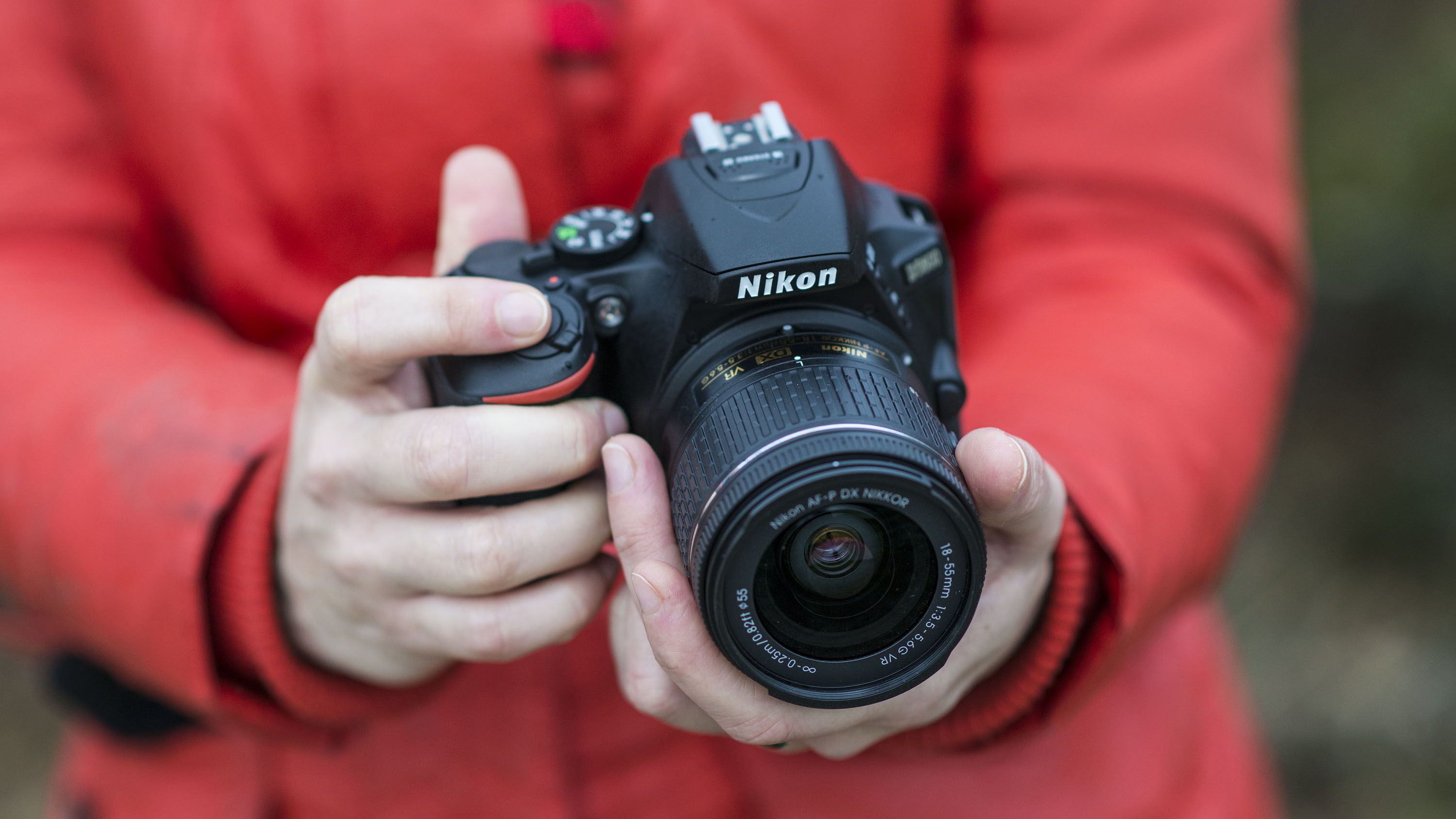
Here's another beginner DSLR that is holding its own against the rise of mirrorless. The D5600 is a step up from the D3000-series models, with a stronger set of specs to rival the likes of the Canon EOS Rebel T8i / EOS 850D (position 2). Key advantages over the D3400 and D3500 include a larger LCD screen, which not only flips out and swivels all the way around to face the front for vlogging, but also responds to touch, together with a more advanced autofocus system, Wi-Fi and a healthy range of additional control on the inside. Sure, you pay a little bit more for the privilege, but if you need a little more growing space it makes sense to go for the D5600 so that it stays with you for years to come.
- Read our in-depth Nikon D5600 review

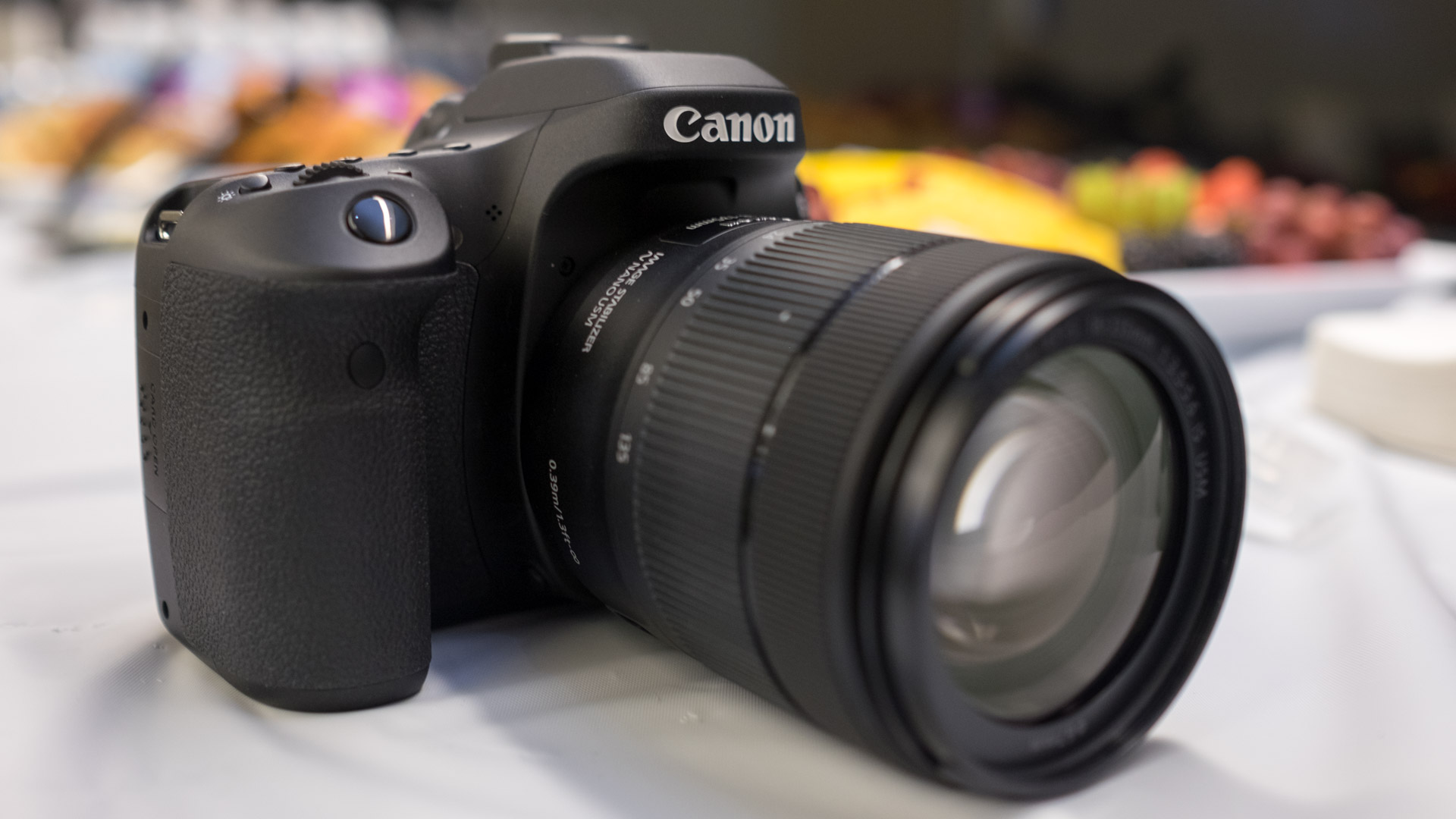
There's no doubt that the newer Canon EOS 90D (below), which is the EOS 80D's successor, is the superior all-round DSLR in terms of power and features. But the EOS 80D currently sits higher in this list due to the impressive value it offers – right now, you can find it for almost half the price of its newer sibling. And despite coming out in 2016, it's still a very capable camera for beginners. For a start, the combination of a 24.2MP sensor and 45-point autofocus system ensure you get reliably good photos and focusing. There's a guided menu system that's easy to navigate, and on-board Wi-Fi and Bluetooth to transfer images wirelessly if needed. The only downside is that the 80D's kit lens is a tad soft around the edges, so we'd recommend buying the body only and a better lens separately.
- Read our in-depth Canon EOS 80D review

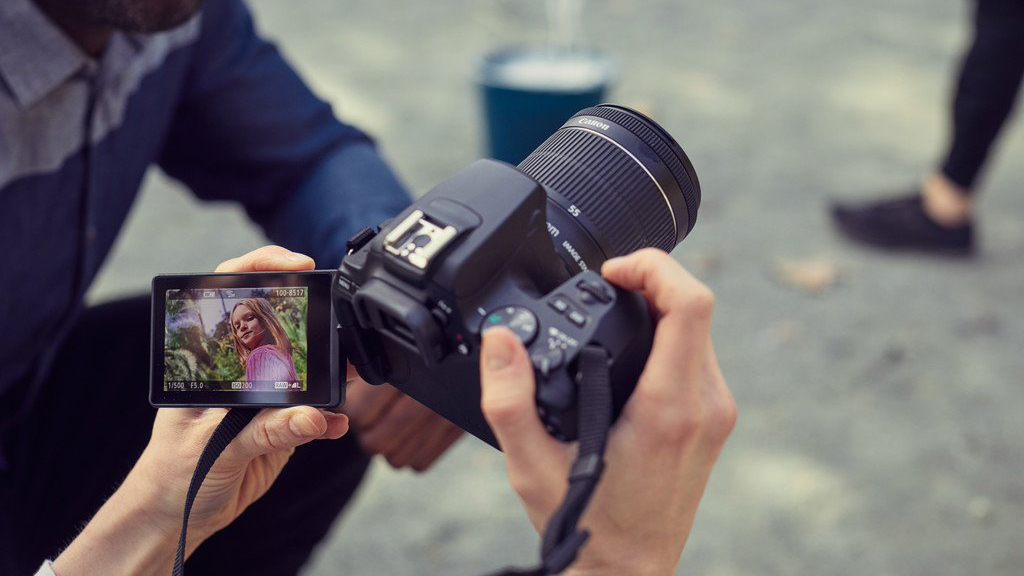
The EOS Rebel SL3 – also known as the Canon EOS 250D and EOS 200D Mark II – is one of the more recent additions to this list – indeed it's one of only a handful of beginner models announced in recent years. As its name suggests, it picks up from where the Rebel SL2 (EOS 200D) left off, adding a fresh processing engine and 4K video recording on top of a collection of smaller extras. There may be lots of competition from entry-level mirrorless cameras right now, but if you like the traditional handling of a DSLR – including an optical viewfinder – the 250D is one of the most attractive and affordable models available right now.
- Read our in-depth Canon EOS Rebel SL3 / EOS 250D review

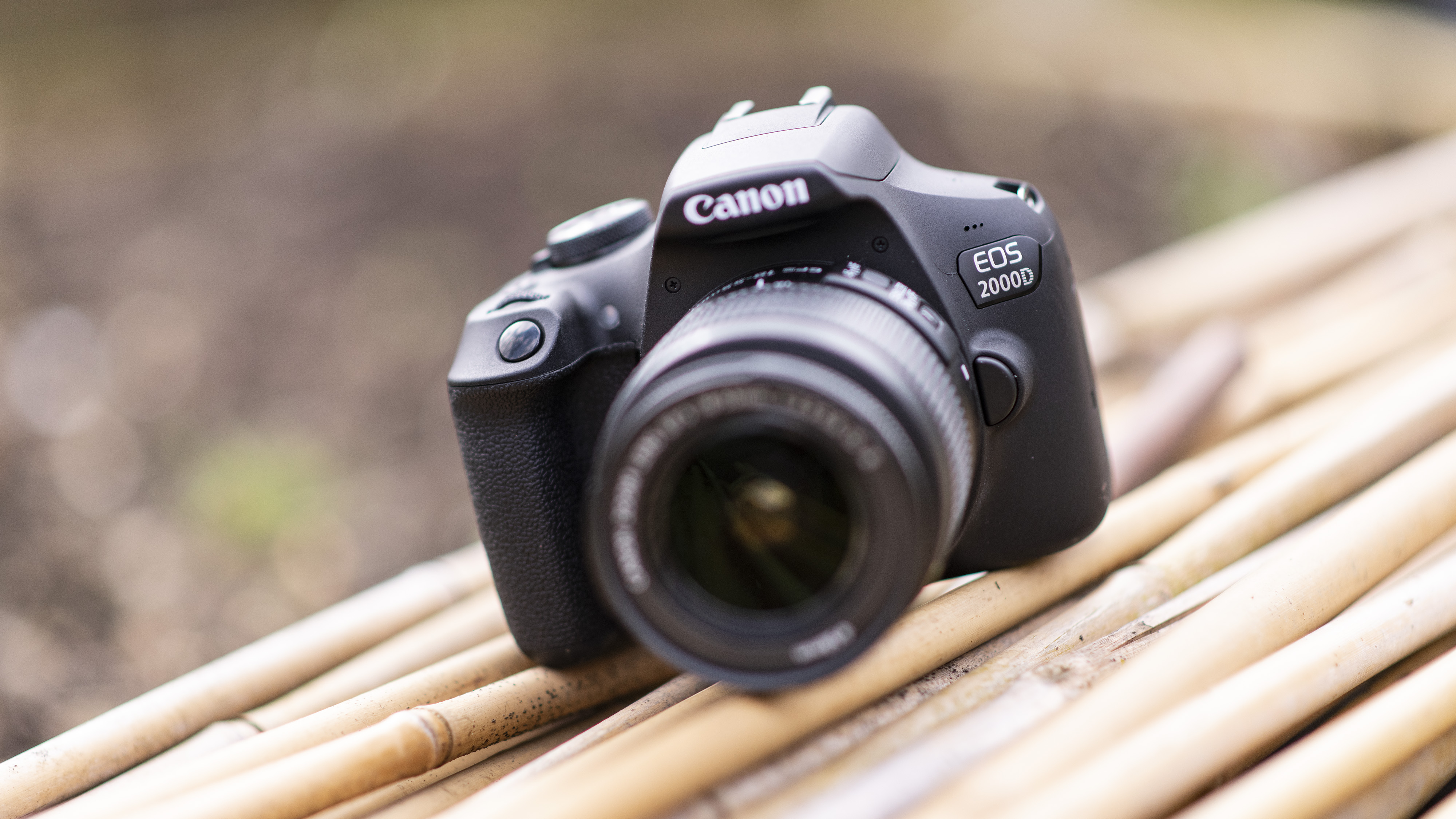
This is one of the cheapest DSLRs in Canon's current line-up, which also makes it a very cost-effective way to get access to an endless assortment of lenses, flashguns and other accessories. Its low price tag means it understandably lacks some of the fancy tricks of its bigger brothers – flip-out LCD, 4K video and so on – but there's still a very good level of physical control on offer. And, most importantly, image quality from the 24MP sensor is sound. It's designed very much with its target audience in mind, with a Feature Guide to help you understand everything, and battery life is also better than many mirrorless models at this price point – still a key advantage of DSLRs. Wi-Fi, NFC and Full HD video recording round off the specs, making it a well-rounded first-time option.
- Read our in-depth Canon EOS Rebel T7 / EOS 2000D / EOS 1500D review

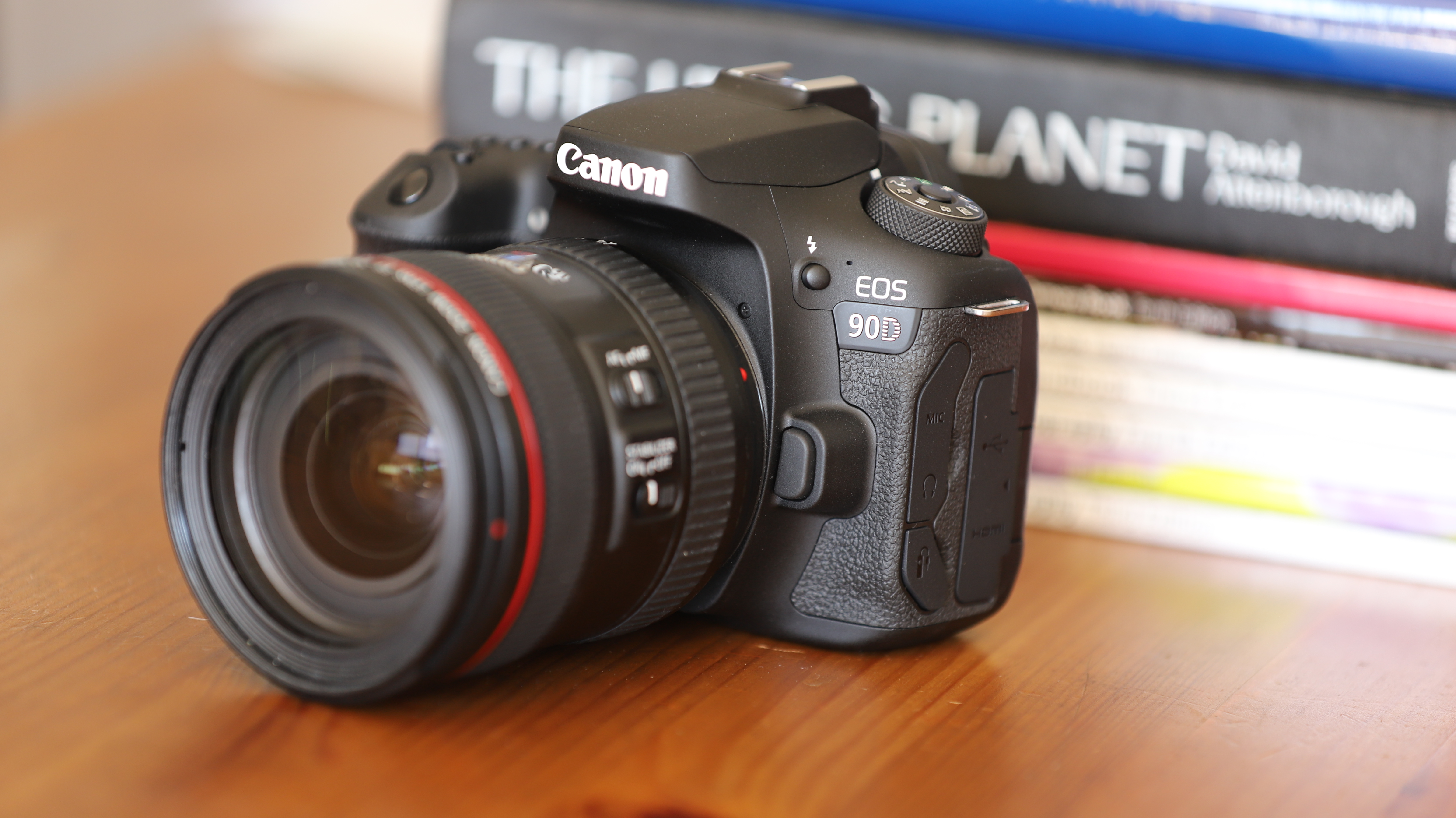
The Canon 90D might be the last enthusiast-level DSLR the company ever makes – and if so, it’s going out with a bang. The versatile 90D packs a high-resolution sensor which, paired with Canon’s Digic 8 imaging engine, offers the enticing prospect of uncropped 4K video at 30fps. Color reproduction is superb and there’s plenty of detail in both stills and video, aided by a new 216-zone metering system (even if noise can be an issue above ISO 8000). A deeper grip means the 90D is also really comfortable in the hand, while a joystick makes selecting from the Dual Pixel CMOS AF points a cinch. Battery life is a boon, too, with 1,500 shots possible on a single charge. It's possibly a bit too much camera for an absolute beginner (both in price and features), but there's no doubt it offers a lot of room to grow into. Either way, the 90D proves that DSLRs still have a place in the mirrorless world.
- Read our in-depth Canon EOS 90D review

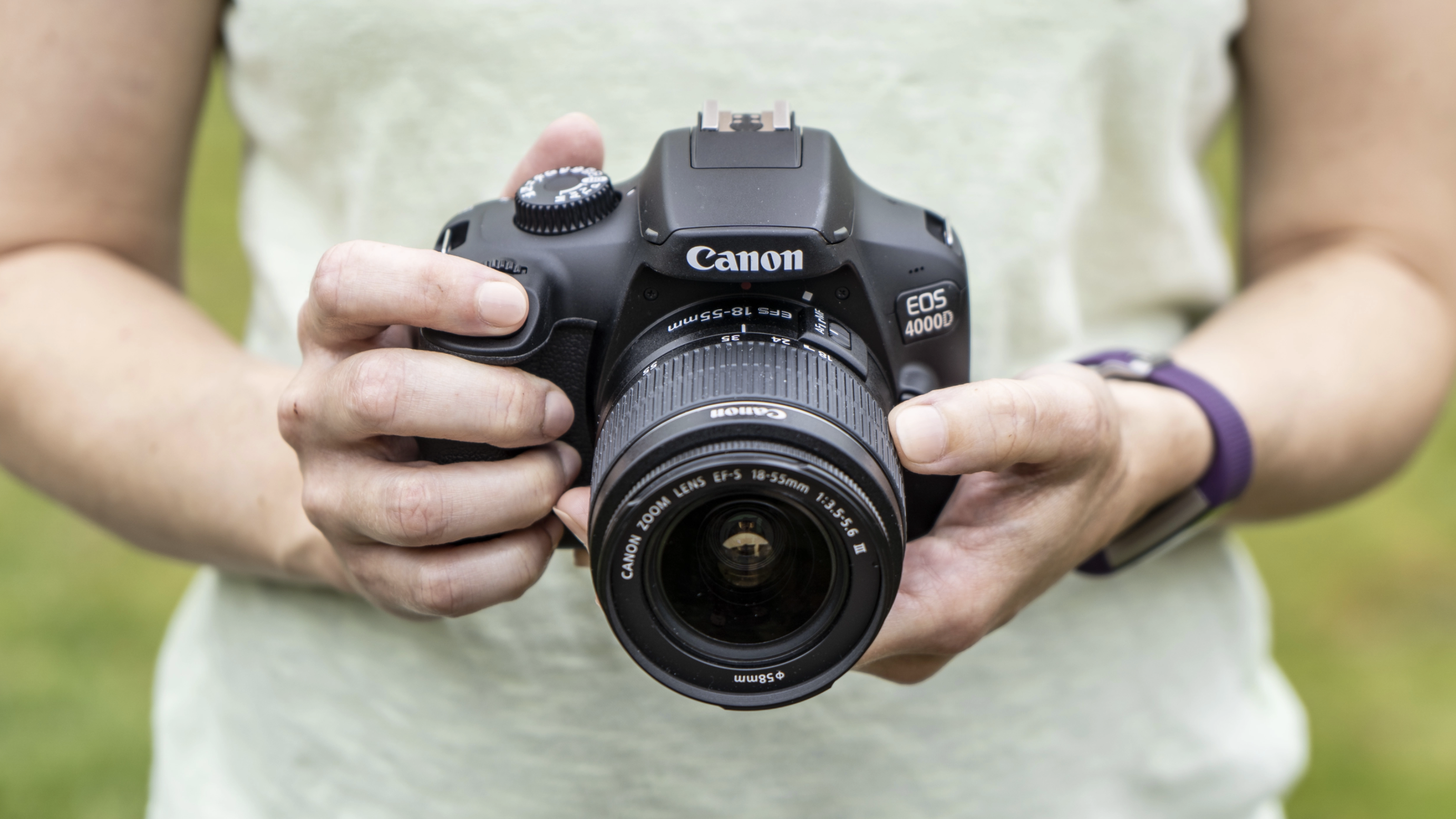
If you’re making your first foray into DSLR ownership, you don’t necessarily need a camera that can do everything. And if you’re looking for something very basic but very affordable, Canon’s 4000D (also called the 3000D in some markets) is a decent first choice.
There’s a lot about the 4000D that seems dated alongside the latest entry-level models. The 18MP sensor and DIGIC 4+ processor are both aging, as is the modest 9-point autofocus system, which has been in Canon’s catalogue since 2009. The LCD display likewise feels long in the tooth, with a 2.7-inch diagonal and 230k-dot resolution, while Live View performance is a little sluggish. Finally, the polycarbonate shell feels understandably cheap.
But it’s not all bad: the button layout is easy to navigate for new users, battery life is strong at 500 shots and image quality is solid, with noise handled fairly well. Those upgrading from a smartphone or compact should find results decent, with a fair amount of detail and a good level of saturation, while Picture Style presets enable easy tonal tweaks.
To more experienced buyers, the 4000D will feel like a step back in time, with older components and unremarkable performance. But if affordability is your key criterion, you might be able to look past the limited feature set and see some wallet-friendly potential.
- Read our in-depth Canon EOS Rebel T100 / EOS 4000D review

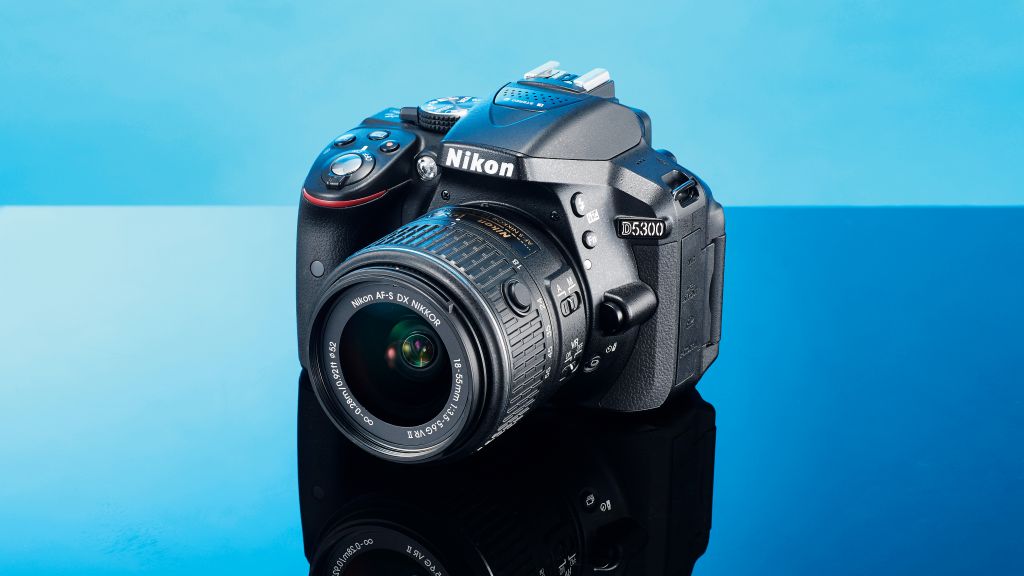
The oldest DSLR in this list, the Nikon D5300 first arrived in 2013. Despite its grey hair, this formerly mid-range camera now has a entry-level price and still has plenty to offer the beginner photographer. For a start, the 24.2MP sensor still performs very well, with its lack of a low-pass filter ensuring its captures plenty of detail, while the 39-point AF system remains reliable as long there's plenty of available light. Unusually for a DSLR that's this old, the D5300 also has a vari-angle screen, which is handy if you like to compose via Live View rather than the optical viewfinder. Admittedly, AF performance in Live View lags a long way behind its mirrorless rivals, but if you want a classic shooting experience, the D5300 remains a good buy at today's lower prices.
- Read our in-depth Nikon D5300 review

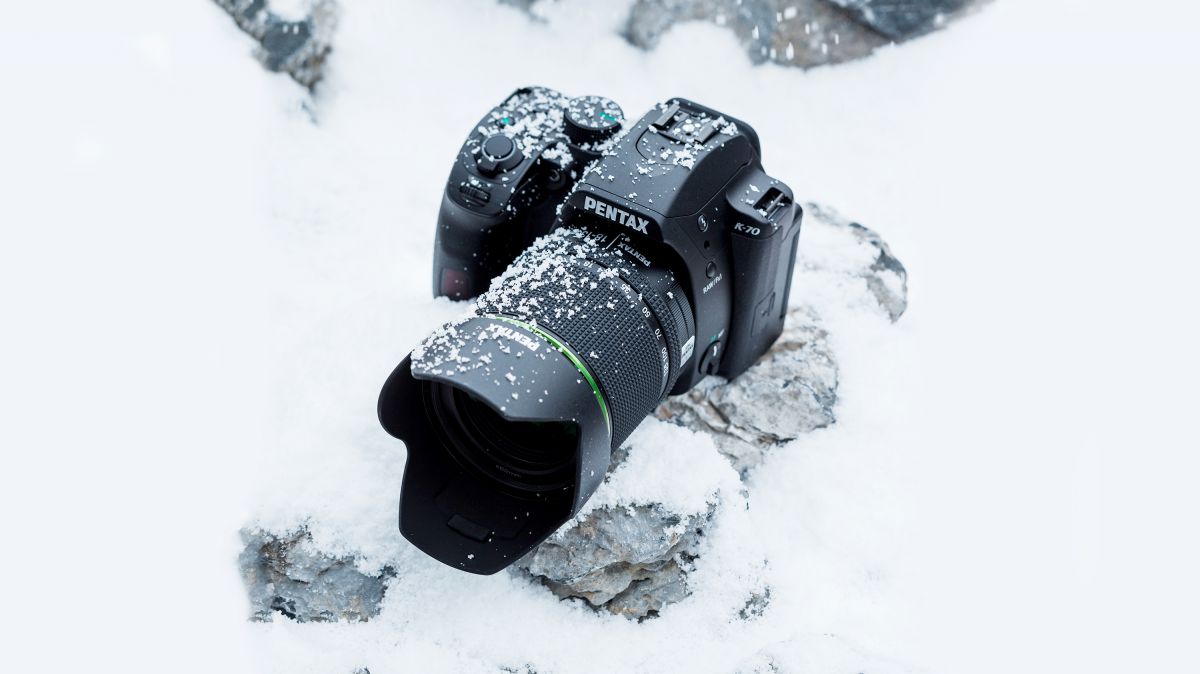
Although a few years old now, the K-70 remains a good value option for those who want something different from the 'big two' DSLR manufacturers. It's a particularly good choice if you have a stash of old Pentax lenses gathering dust in a basement. The K-70 has a very useful articulating screen, while the hybrid live view autofocus system makes it an actual practical alternative to using the viewfinder. Possibly our favorite thing about the K-70 is its tough credentials, which is typically lacking from entry-level models. If you're keen to take lots of pictures outdoors – such as landscape shooting – being able to rely on it not being destroyed by inclement weather is a big bonus. One slight disappointment is the kit lens which is often bundled with the camera – while it offers a much longer focal length than most others here, it can be a little soft in places.

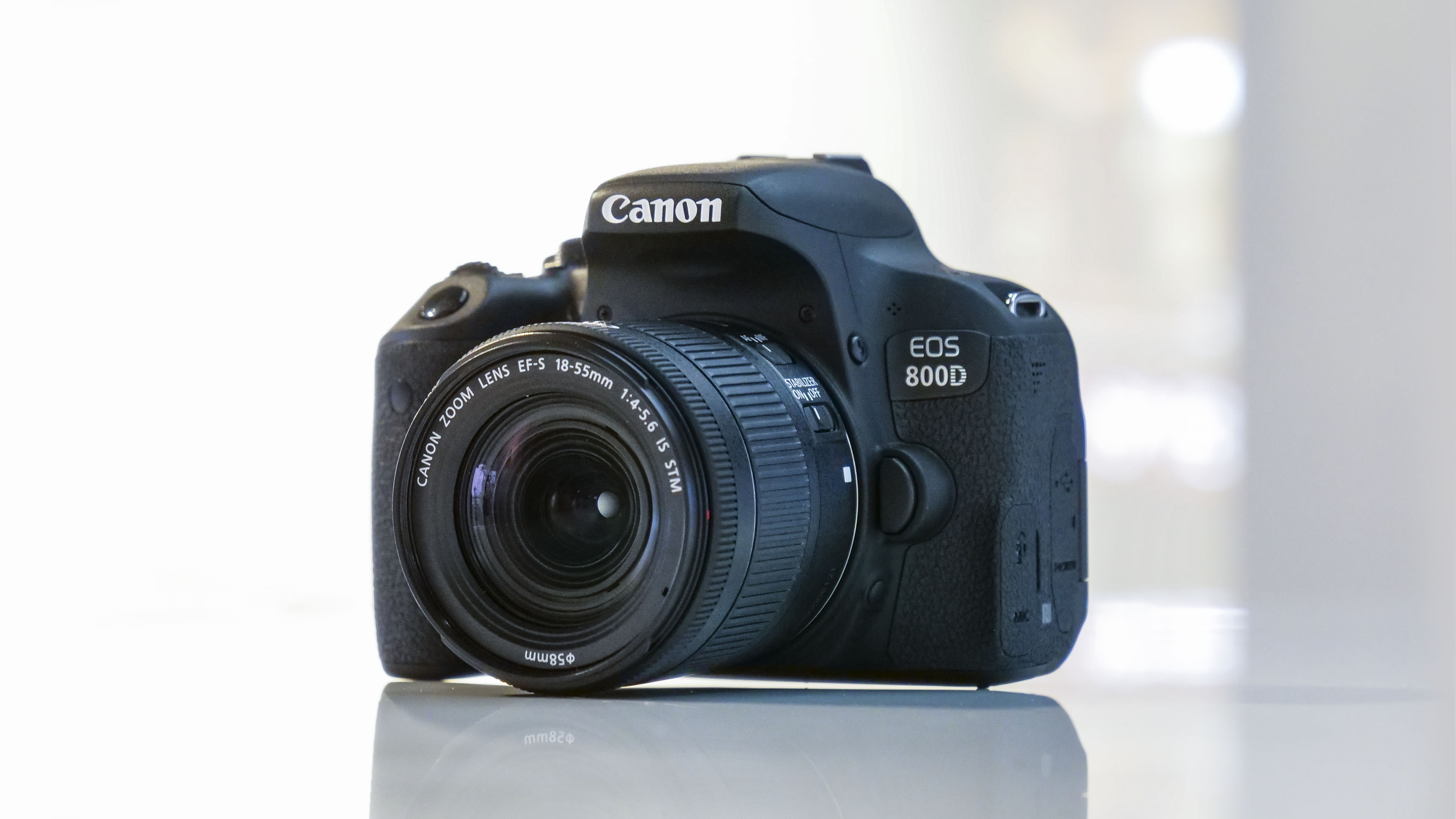
If you don't need the 4K video mode of the newer EOS Rebel T8i / EOS 850D, then this predecessor offers potentially better value – if you can find somewhere that has it in stock. If not, then it's still worth considering second-hand versions, because the Rebel T7i (or EOS 800D outside the US) is a still a very fine DSLR for beginners. Of course, this camera is four years old, so some of its specs (like 6fps burst shooting) look a little dated, but the Dual Pixel autofocus performs excellently for Live View snapping, while image quality remains impressive. The finish is a little plasticky, but the EOS Rebel T7i / EOS 800D has all the handling benefits of a DSLR and the battery life to match, with a quoted stamina of 600 shots per charge.
- Read our in-depth Canon EOS Rebel T7i / 800D review
Also consider...
None of the above take your fancy? Here's another option to consider.
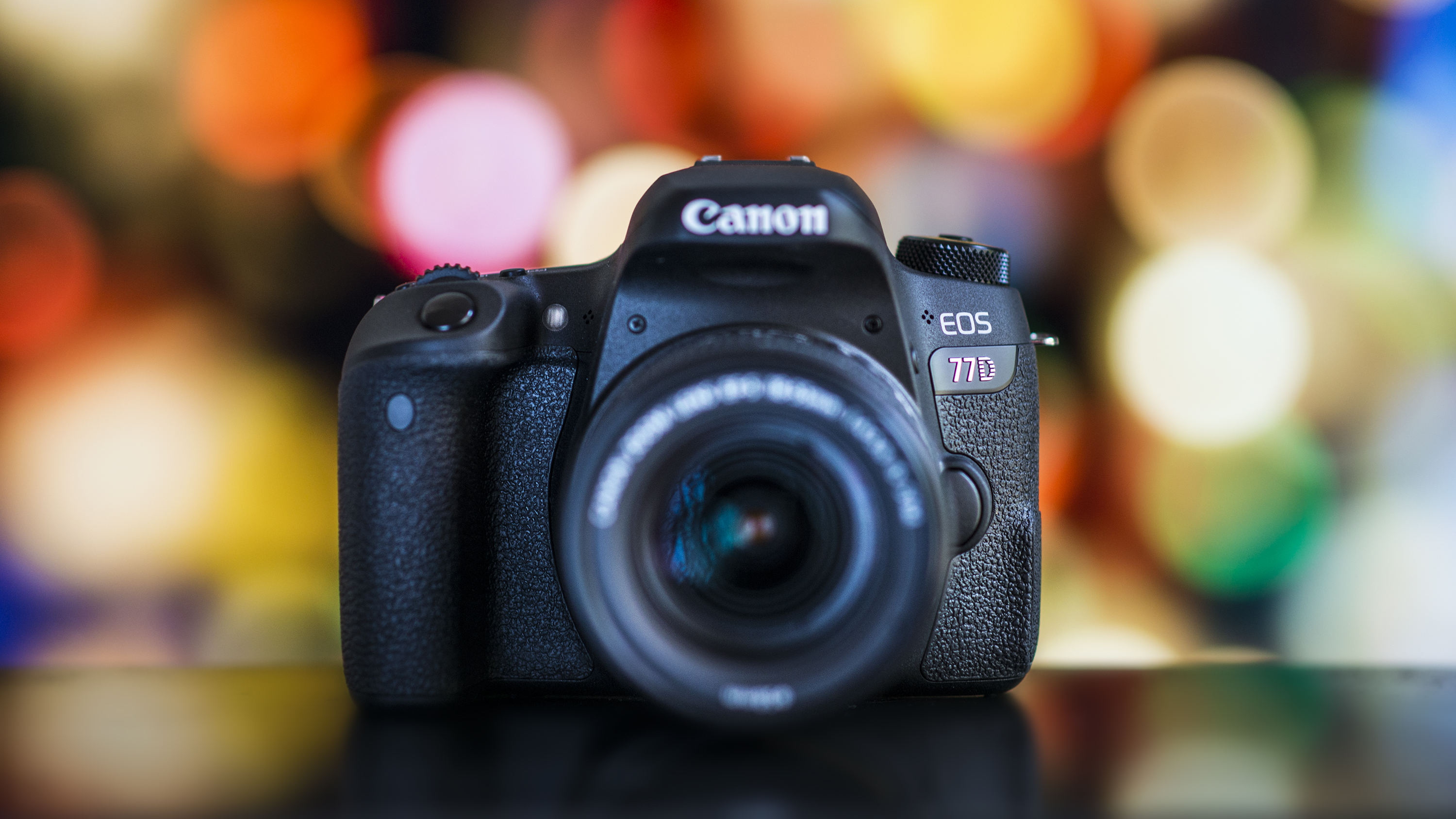
The EOS 77D is a slightly more advanced beginner DSLR, and it provides a few extra treats for those who feel they may outgrow more basic models before long. While we weren't too excited about it at the time of its release, the fact that it's spent some time on the market now means it can be bought for a much more agreeable price tag. On top of the EOS Rebel T7i / EOS 800D's foundation, there's a top-plate LCD screen that gives you shooting options at a glance, as well as two control dials to make adjusting options faster. You also get some extras on the inside such as bulb and interval timers. If you can stretch to the EOS 80D (see no.4) that sits just above it, even better – otherwise, this would be a slightly more capable option than its more basic siblings.
- Read our in-depth Canon EOS 77D review

What should you look for when buying a beginner DSLR?
There are three main factors to consider when buying a beginner-friendly DSLR: the camera's size, screen and kit lens options.
If you're trying to learn your way around manual settings like aperture and shutter speed, which is one of the main benefits of a DSLR, then you'll ideally need a model that's small and light. This means you'll be more likely to take it out regularly and master those controls. The most beginner-friendly cameras, like the Nikon D3500 and Canon 250D, tend to be particularly small for DSLRs, so take a close look at those.
Looking to shoot lots of video along with your stills? DSLRs can be a cheap way to get into vlogging too, so make sure you look out for models with a vari-angle screen if you need this. These can help you shoot from different angles and also flip round to the front so you can check your framing while vlogging to camera.
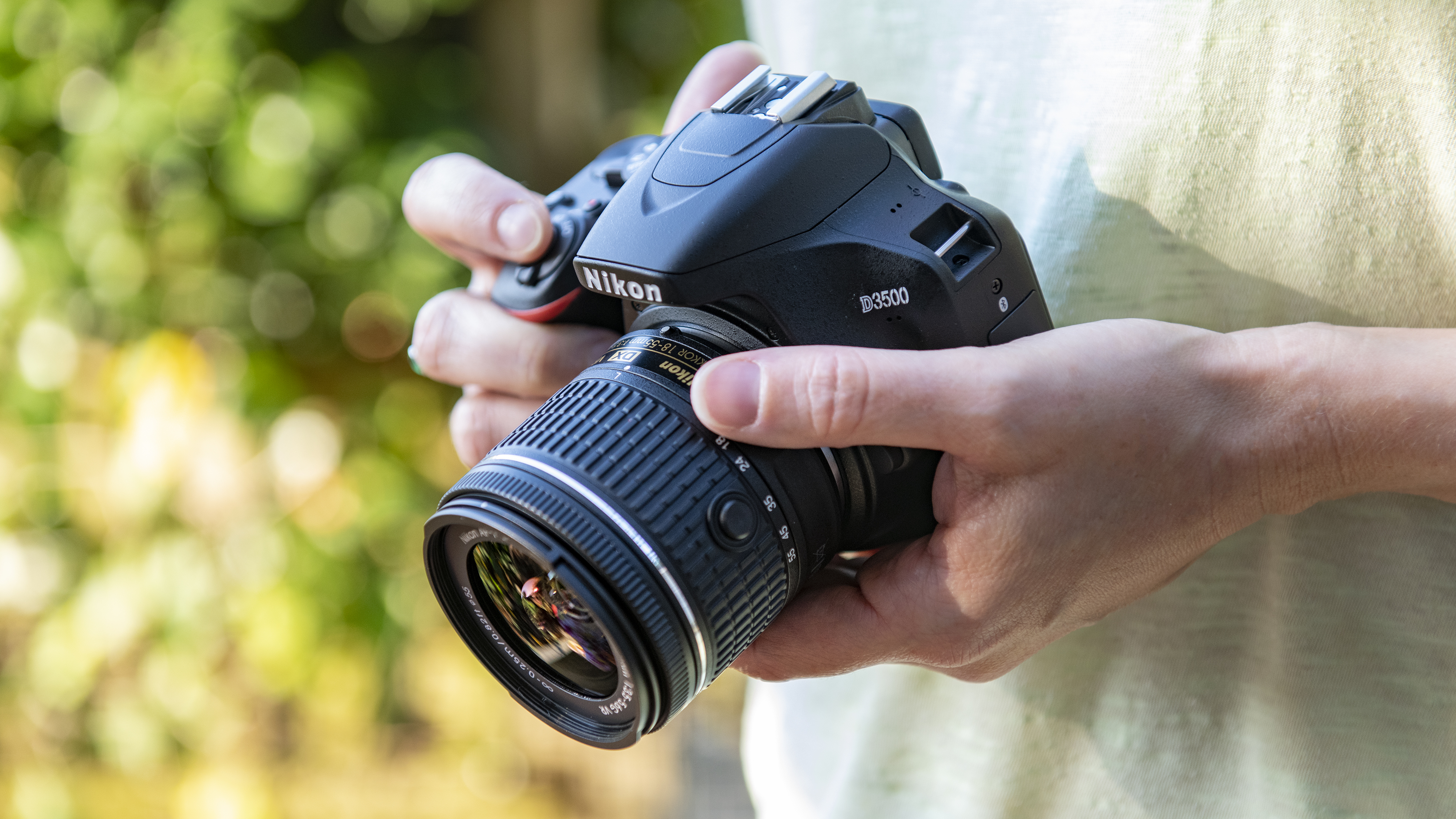
Lastly, you'll want to consider lenses. As a beginner, you'll most likely be starting from scratch, which means it makes more sense to buy your DSLR with a kit lens. A word of warning here, though – most manufacturers offer two types of kits lens, one with image stabilization and one without. It's best to go with the image-stabilized kit lens, as you'll be able to shoot sharper images at slower shutter speeds.
While an 18-55mm kit lens will be more than enough to get you started, one of the big benefits of DSLRs is being able to add extra lenses for different kinds of photography. For example, wide-angle and telephoto zoom lenses, as well as high-quality macro options. You can also add a flashgun and other accessories, which help you to make the most of whatever types of photography you're into.
Still not entirely sure whether you need a DSLR or a mirrorless camera? Don't forget to check out our Mirrorless vs DSLR cameras: 10 key differences guide. Alternatively, if don't quite know what kind of camera you need at all, then read our easy-to-follow guide to camera types: What camera should I buy?
Should you buy a mirrorless camera over a DSLR? Watch our guide video below to learn more:
- Best camera
- Best cameras for beginners
- Best DSLR
- Best mirrorless camera
- Best 4K camera
- Best full-frame camera
- Best compact camera
- What camera should I buy?
- Mirrorless vs DSLR: 10 key differences
- Camera rumors
- Best digital photo frame
- Turn your snaps into a beautiful photo book – we've picked out the best

from TechRadar - All the latest technology news https://ift.tt/35PGdeP

No comments:
Post a Comment